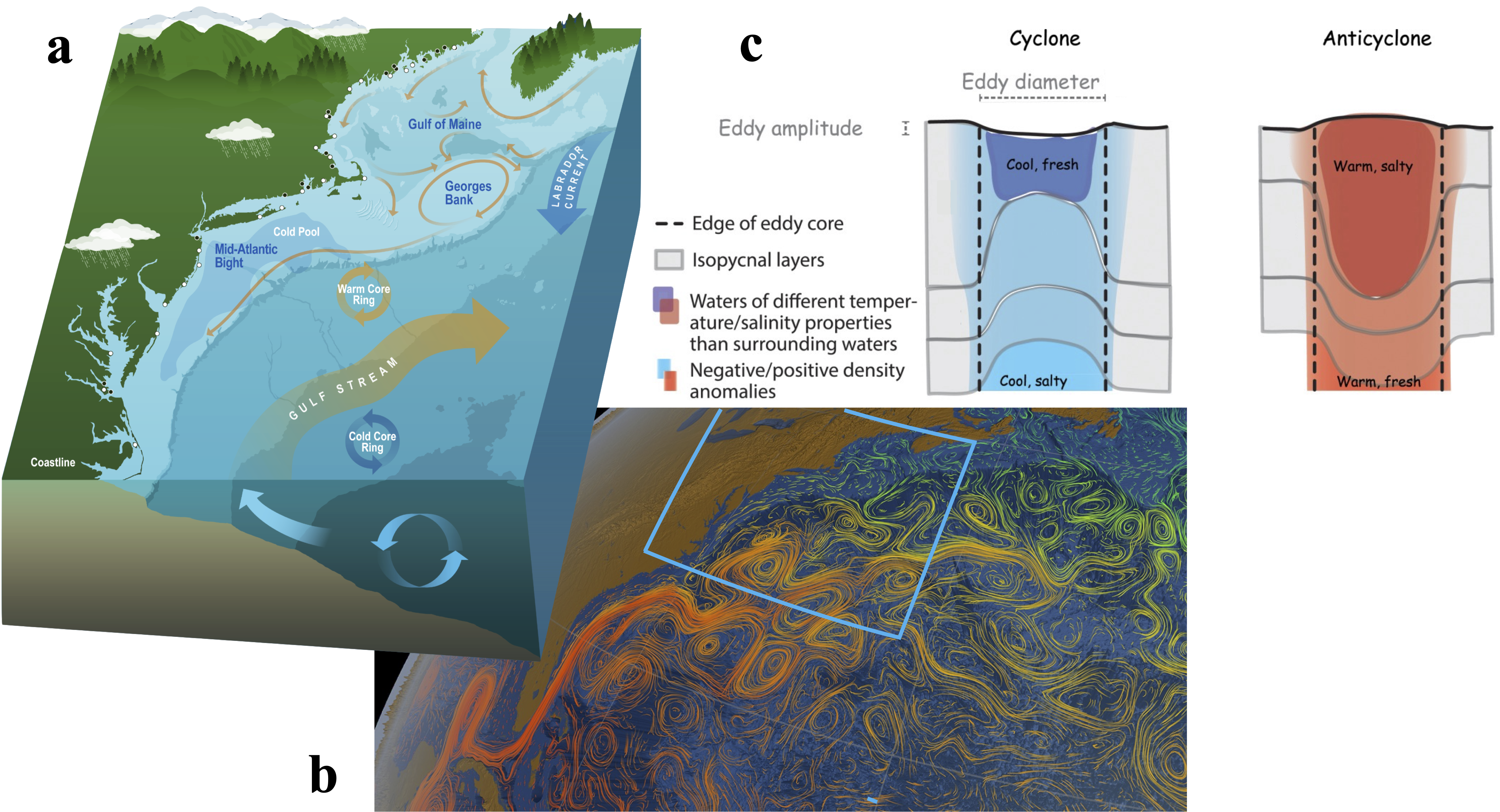Projects
Projecting future changes in the Gulf Stream warm-core rings and their impacts on the Northeast U.S. Large Marine Ecosystem in a changing climate using regional MOM6 simulations
We will use dynamically downscaled regional MOM6 simulations to investigate future changes in the generation, propagation and shelf interaction of Gulf Stream warm-core rings, evaluate the corresponding physical and biogeochemical changes and impacts on the shelf, and understand the underlying mechanisms. Our objectives include: (1) assess the historical run of the regional MOM6 model for its WCR reproductive capacity; (2) project future changes in GS WCRs and the corresponding physical and biogeochemical changes on the shelf, based on existing eddy identification and tracking techniques; (3) clarify the dynamical basis for the projected changes in the WCRs and understand the underlying mechanisms by examining eddy energetics and diagnostic budgets of heat, salt, oxygen, and nutrients; and (4) critically assess and discuss potential climate change impacts on the living marine resources with a focus on fisheries (e.g., future habitat shifts) influenced by the projected WCR changes and deliver this information to NOAA NMFS and CEFI partners.
 Figure 1. The Northeast U.S. continental shelf large marine ecosystem (with major circulation pattern and currents indicated by arrows; a; figure credit to the NOAA State of Ecosystem reports for the Mid-Atlantic and New England), Gulf Stream flows including meanders and mesoscale eddies colored with sea surface temperature (b; figure credit to the NASA Goddard Space Flight Center Scientific Visualization Studio), and typical vertical structures of cyclonic cold-core ring and anticyclonic warm-core ring (c; Frenger et al., 2015).
Figure 1. The Northeast U.S. continental shelf large marine ecosystem (with major circulation pattern and currents indicated by arrows; a; figure credit to the NOAA State of Ecosystem reports for the Mid-Atlantic and New England), Gulf Stream flows including meanders and mesoscale eddies colored with sea surface temperature (b; figure credit to the NASA Goddard Space Flight Center Scientific Visualization Studio), and typical vertical structures of cyclonic cold-core ring and anticyclonic warm-core ring (c; Frenger et al., 2015).
Other Projects
- Projects · Projecting future changes in the Gulf Stream warm-core rings and their impacts on the Northeast U.S. Large Marine Ecosystem in a changing climate using regional MOM6 simulations
- Projects · Skillful multiyear prediction of marine habitat shifts jointly constrained by ocean temperature and dissolved oxygen
- Projects · Seasonal Prediction of Bottom Temperature on the Northeast U.S. Continental Shelf
- Projects · Interannual Variability of the Mid-Atlantic Bight Cold Pool
- Projects · Long-term SST Trends over the Northwest Atlantic Shelf & Slope
- Projects · Seasonal Variability of the Mid-Atlantic Bight Cold Pool